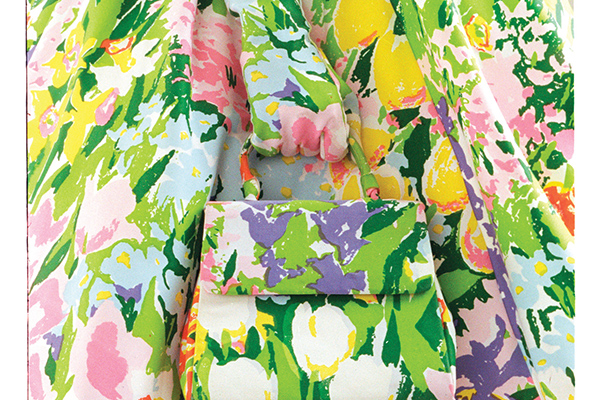We’re seeing a high level of development and growth within the large-format inks space. So just what trends should you be watching out for? Richard Stuart-Turner investigates.
When considering how best to add value and stand out from the crowd, many PSPs understandably look at investing in new machinery or software while others might consider the benefits that using different substrates could bring. Ink, on the other hand, is often overlooked, yet it is an area that has continued to innovate and evolve rapidly over the past few years, particularly in the large-format sector where new applications and possibilities are emerging regularly.
Choosing the right ink is not only crucial to delivering a high quality job but it can also help you as a PSPs to reduce your costs, increase your productivity and boost your green credentials. Voila! So what are the latest inks developments and trends, and what do they tell us about the shape of things to come?
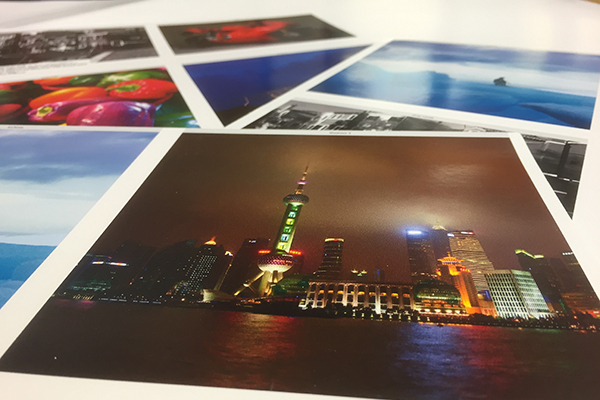
Sun Chemical's biggest recent focus has been on its SunJet division's Aquacure ink range. The company says Aquacure combines the best of water-based and UV curing ink technology by offering high quality output alongside strong adhesion to a wide range of media, high flexibility and production versatility, enhanced resistance properties and an extensive colour gamut.
The low odour ink, which is composed of up to 90% water, requires a dual cure system using both heat and UV or EB curing. Once it is applied, it is dried and then cured to produce a robust ink film that Sun Chemical says is highly durable and waterproof. The manufacturer says the ink has a much wider colour gamut than traditional UV inkjet inks due to its higher concentration of lightfast pigments in a thinner ink film.
SunJet global sales and product manager Rick Hulme says: “People are very comfortable with water - they see it as something that's easily disposable and easily recognisable as being environmentally-friendly. But clearly the utilisation of water onto plastic films and those types of materials is very difficult, so we've done a lot of work to merge the benefits of UV and water-based with Aquacure.
“This chemistry has been very well received from a brand owner and OEM perspective because it's very similar to what they are used to from flexo and gravure and offset - the gap between conventional and digital is ever shrinking.”
He adds: “We certainly see aqueous growing and the likes of solvent levelling out and potentially declining. UV for us is continuing to be in a growth phase and we believe that will certainly continue for the foreseeable future.”
John de la Roche, national sales manager at Mimaki distributor Hybrid Services, says Mimaki is also seeing major UV growth, with the manufacturer's LED UV inks continuing to move forward at a rapid pace.
“Alongside our core LED UV inks, which already offer varying degrees of flexibility, the new highly formable LUS-900 and LUS-350 UV inks create significant new opportunities for companies looking to move into applications such as thermoforming.
“These inks are stretchable when heated, up to 900% and 350% respectively, enabling digital decoration of thermoformed parts that could only be created using time-consuming and expensive screen printing in the past.”
Also seeing success with UV is Canon, which launched its UVgel waterless ink earlier this year alongside its new Océ Colorado 1640 printer - the first machine to be built based on the UVgel technology. The UV curable ink gels immediately on contact with the substrate, Canon says, and as it requires no heat to cure, it is suitable for ultra-thin and heat sensitive media.
Canon UK business group manager for display graphics, Dominic Fahy, says UVgel enables users to print up to four times as fast as is possible with water-based technology. “The UV curable ink delivers consistent vibrant colour, banding-free output and sensational finishing, and its versatility means that POS, billboard, wallpaper and more are effortlessly at the disposal of the signage and interior décor market.”
He adds UVgel also offers a “significantly reduced cost” compared to eco-solvent and latex inks, partly due to the technology's ultra-thin ink dispersion, which results in low ink consumption.
In Image Reports’ recently published Widthwise 2017 survey, 16.87% of respondents highlighted consumables (ink and media) reliability as the biggest technological issue that they face today in wide-format - an issue ranked higher than any other. Ink manufacturers say they are working hard to bring this number down.
“We have an extensive quality assurance process and we meet weekly to report any issues that customers are experiencing,” says Mark Goodearl, senior ink product manager at EFI Inkjet. “Reliability is critically important to our customers and we take it very seriously. It's of no value to us if our customers are having downtime, so we're very responsive to that.”
Tudor Morgan, segment marketing manager for sign and display at Fujifilm Graphic Systems Europe, says: “The importance of reliability is in our DNA. As hardware has evolved in terms of speed and quality, the complexity has increased exponentially. We are investing with our partners in introducing methods of monitoring printer performance remotely to help rapid diagnostics.”
Hardly surprisingly, some ink manufacturers say that third-party inks, which can be more than 30% cheaper than OEM inks in some cases, could cause reliability problems.
“If you introduce a third-party ink into a printer, you risk jeopardising your ink delivery system and the printheads,” says EFI Inkjet's Goodearl.
Thom Brown, chief inkologist at HP, adds: “Using non-HP ink may contribute to technological challenges. The level of innovation within original HP inks is not matched by any third-party ink manufacturer and, as such, they don’t perform the same. Print quality, durability of prints and reliability is significantly penalised when using third-party inks.”
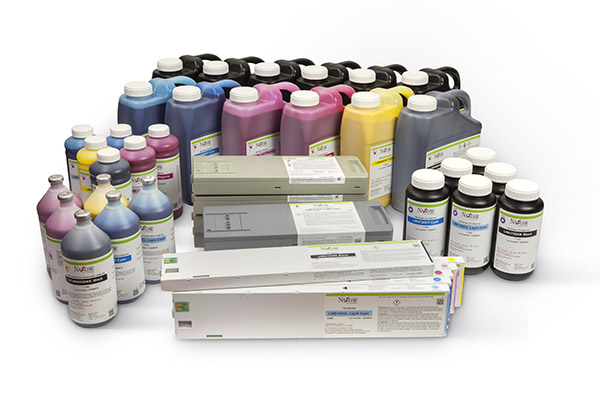
But Stephen Woodall, global market segment manager for aqueous and solvent digital at third-party ink manufacturer Nazdar Ink Technologies, says its inks are tested to destruction before they go to market. “The strictness of our quality control systems means our inks are as fit for purpose and in some cases better than OEM’s.
“Nazdar stands behind the quality of its products and the Nazdar warranty gives our customers peace of mind and confidence when using them. Unfortunately, there are some manufacturers whose products do not comply with the regulatory requirements and who do not disclose all of the ingredients in their products, which of course is illegal and potentially harmful to their customers. But at Nazdar we ensure all our products are fully compliant in all regions.”
Chris Bailey, managing director at Nazdar distributor Quality Print Services, adds: “Alternative inks are becoming more and more popular because quality is improving, in general. I think the market share will increase as the desire and need for better quality inks, that also reduce costs, is always there.”
Nazdar's latest product offering, released following promotion at Fespa in Hamburg in May, is its 203 Series solvent inks, developed for use with Roland wide-format printers. These inks are manufactured to ISO9001 standards and are said to meet the regulatory targets achieved by Eco Max 3 OEM inks.
Epson's latest launches for the outdoor large-format signage market are the UltraChrome GS2 and GSX pigment-based inks for its SureColor S-Series printers. The manufacturer says these inks are durable and fade- and UV-resistant as well as waterproof.
Meanwhile, the company's water-based UltraChrome DS inks, which are formulated for use with the SureColor F-Series dye-sub printers, are another of its current focus areas due to the growth of the digital textile printing market.
“The UltraChrome DS inkjet set combines the four process colours of inks and has an option for the HDK Black with its superior black density. The aqueous ink absorbs into the material for stunning and lasting results,” says Epson UK sales manager for pro-graphics Phil McMullin.
“And for the SureColor SC-F2000 direct-to-textile printer - which prints onto cotton-based products - there are the UltraChrome DG inks. The four-colour plus white ink is ideal for printing on dark fabric, producing crisp, even colours and smooth gradation. The white ink is circulated within the system and has been designed to reduce clogging, which increases productivity.”
HP's Brown provides a reminder that while dye-sub is dominant in textile printing, it is not the only viable option. “Our Latex inks, together with the latest textiles developments, offer a much simpler solution than dye-sublimation for digitally printing textiles for signage and decoration applications, thus avoiding the need of the calendaring process while still achieving the required levels of durability and quality.”
Another current trend, according to ink manufacturers, is the continued importance and popularity of eco-friendly inks.
“We are seeing a market trend for lower-odour inks that are safer for the user and the environment - we're essentially seeing fewer hazard symbols on packaging - and expect to see that continue in wide-format. We're very diligent in our testing of raw materials to ensure they are at safe levels,” says Nazdar's Woodall.
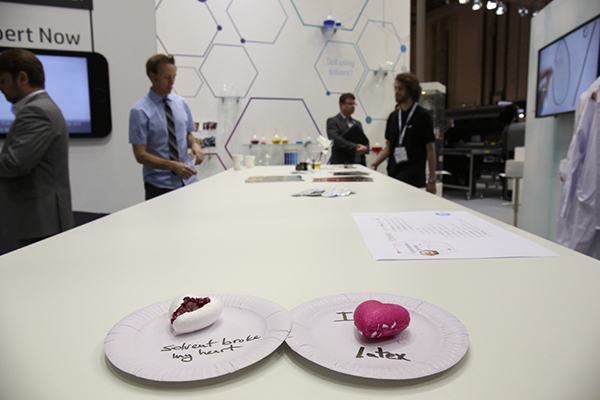
HP graphics solutions business sustainability and environmental manager Carlos Lahoz believes many PSPs are currently looking at eco-friendly solutions because they are anticipating regulatory changes that will require they move to greener technologies.
“More sustainable and eco-friendly printing has also given PSPs a leg up, allowing them to differentiate themselves in front of customers that are demanding these types of environmental changes.”
He adds: “There has been a shift away from solvent inks - they are considered a technology of the past. Even moving from hard solvent to mild solvent or eco-solvent, they are still solvents that are hazardous chemicals and are bad for the print operators, for the end users of the print, and for the environment.
“We’re focused on producing safer and more environmentally-friendly Latex inks, which create very low emitting prints, helping preserve the indoor air quality. HP Latex replaces solvents by water as the main ingredient for the ink. With this, we can deliver an ink that is non-hazardous and non-flammable, that minimises generation of VOCs that are harmful for health and for the environment.”
Aside from its continued environmental push, a key recent focus area for HP has been the reformulation of its PageWide Pro and PageWide XL inks to meet the demands of the PageWide print bar.
The company says the drying times of these inks have been reduced to match the high print speeds, which prevents handling and sheet stacking damage. The inks are said to deliver full density print in one-pass, achieved by the printhead remaining stationary while the paper moves in one direction under it.
Most of the ink manufacturers interviewed for this piece said PSPs are also increasingly looking for inks that can print a wider colour gamut - to boost the vibrancy of print and enable them to hit more corporate colours and therefore target more blue-chip companies.
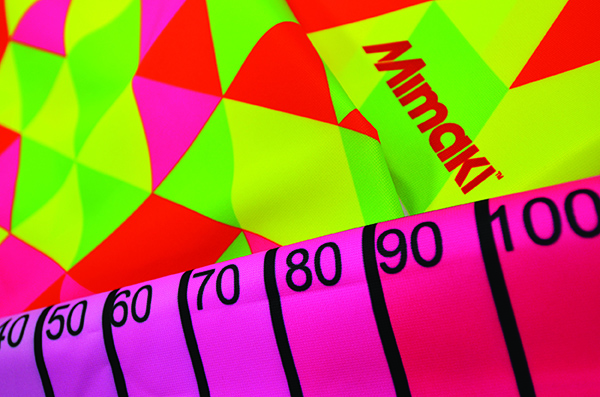
“Modern inks give great colour gamut, even in basic CMYK format. Mimaki has developed inks such as the fluorescent dye-sublimation inks in yellow and pink to increase colour gamut and further improve business opportunities. The array of applications possible with the neon inks opens up options for creating fashion trends, but also in retail with attention grabbing display graphics,” says Hybrid's de la Roche.
EFI Inkjet's Goodearl adds: “On our HS product line we're able to do some gloss control of the UV ink – glossier inks have a higher perceived colour gamut. We're also able to introduce some orange and violet colours for the HS line that expand the gamut even further in the directions of certain key end customers to reach their corporate colours.”
With cost efficiency becoming more important than ever for PSPs, ink manufacturers are also constantly working to drive down the cost of ink per square metre of output.
“When we advance in increasing speed and on reducing cost per square metre, automatically we open new possibilities, making digital printing a viable option for classical print applications. So it’s part of the core strategy of HP’s graphics solutions business to continue innovating in these two vectors,” says HP's Lahoz.
SunJet's Hulme says that although Sun Chemical strives to ensure its products are as cost efficient as they can be, generally he does not expect ink prices to fall by a significant amount in the coming years.
“Ultimately, there are inherent costs in ink formulations and within the equipment itself which has to be paid for, so therefore you end up in a position where there's not a huge amount of margin left to work with.”
A lot of R&D money is still being pumped into large-format ink and, accordingly, it continues to innovate and play a major part in driving the overall growth of this sector sector, as well as the breadth of applications possible within it.


